Book Launch: "Things In Common"
Technorati tags: Books, Book Launch, Things In Common, Syed Akbar Ali
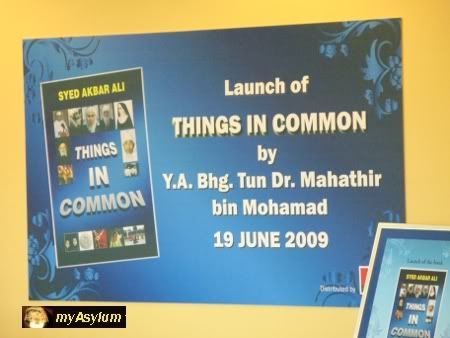 Friday, June 19th, 2009, saw the official launch of a book called “Things In Common”, written by Syed Akbar Ali. The book, for the most part, explores further a theme introduced in his second book, “Malaysia and The Club of Doom”, which Walski had reviewed back in 2006.
Friday, June 19th, 2009, saw the official launch of a book called “Things In Common”, written by Syed Akbar Ali. The book, for the most part, explores further a theme introduced in his second book, “Malaysia and The Club of Doom”, which Walski had reviewed back in 2006.
The book was launched at Kelantan Delights Restaurant, now located at Sooka Sentral, the food and entertainment complex just across from KL Sentral Station, by none other than Tun Dr. Mahathir Mohamad, former Prime Minister of Malaysia, who also is an active blogger these days.
Tun Dr. M, who was accompanied by his wife Tun Dr. Siti Hasmah, had also launched Syed Akbar Ali’s second book, some two years ago.
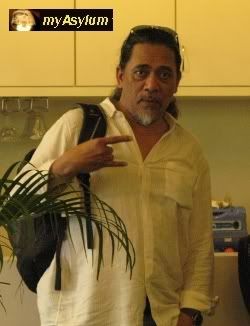 Also in attendance were luminaries from the Malaysian bloggerhood and world of journalism, such as Ahirudin “Rocky” Attan (pictured on the right), Big Dog, Nuraina Samad, Amir Muhammad, A. Kadir Jasin, just to name a few. All in all, according to the book author’s blog, about 120 people or so, including many of his friends and family.
Also in attendance were luminaries from the Malaysian bloggerhood and world of journalism, such as Ahirudin “Rocky” Attan (pictured on the right), Big Dog, Nuraina Samad, Amir Muhammad, A. Kadir Jasin, just to name a few. All in all, according to the book author’s blog, about 120 people or so, including many of his friends and family.
More pictures from the launch can be viewed at the Minaq Jinggo Photopages. What Walski
Walski shared a table with Rocky, Nuraina, and blogger Alliedmartster, located somewhere towards the back, from where the rostrum and main table were. Rocky, of course, was recently appointed CEO of the Malay Mail, his second tour of duty, having served on the paper earlier.
The launch was not very different from other book launches that Walski had attended in the past – speeches by the author and guest of honor, signing of the book plaque by the guest of honor.
What was a little different about this launch was the short press conference afterwards – journos probing the thoughts of Dr. M on political happenings of the day.
(more on the launch, with lots more pictures, in the full post)
In any case, the first to speak was Syed Akbar Ali, who started off by briefly explaining the motivation behind his third book. As mentioned earlier, “Things In Common” is an expansion of a theme introduced in his second book, that many things considered to be part of Islam today are not found in the Quran, but can be found in the scriptures of the other two Abrahamic religions, Judaism and Christianity.
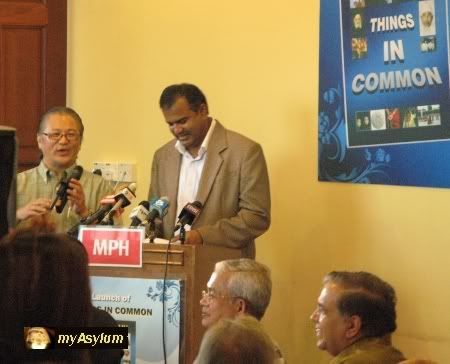
This idea was first introduced in chapter 11 of his second book, “Malaysia and The Club of Doom”.
Syed Akbar mentioned of a less than amicable relationship between the Islamic world and the West, and that many of the practices generally associated with Islam – such as cruel punishment of stoning of adulterers, temporal punishment for apostasy, and destruction of other faiths’ temples and icons – were blamed on the Quran. After all, the Quran is the primary source of Islamic guidance.
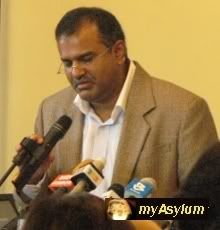 He states that this blame is off the mark, because many, if not all, of these Islam-associated practices are not even mentioned in the Quran. Many of these, however, can instead be found in the Bible, in particular the Old Testament. But this misunderstanding is not surprising – even Muslims, too, don’t know well enough what’s in the Quran. And more importantly, what’s not.
He states that this blame is off the mark, because many, if not all, of these Islam-associated practices are not even mentioned in the Quran. Many of these, however, can instead be found in the Bible, in particular the Old Testament. But this misunderstanding is not surprising – even Muslims, too, don’t know well enough what’s in the Quran. And more importantly, what’s not.
And so, Syed Akbar’s aim with this book – to bridge the gap of understanding. Not just of those in the so-called West, but within the Muslim community as well. But to understand the Quran, one must be able to read it in a language that one is comfortable with. This idea, too, is touched upon by Tun Dr. Mahathir later on during his 20-some minute speech.
“Things In Common“ is divided into four parts, with the first 3 parts examining in detail the practices generally accepted as “Islamic”, but whose basis cannot be found anywhere in the Quran. Part 4 focuses on Malaysia, primarily, and again ties in with his previous book, asking an implicit, but important question – where we are headed as a nation.
One thing Walski intends to do, but has not yet been able to, is to write a review of the book. Perhaps covering the launch has now provided an impetus.
Next up on the podium was Tun Dr. Mahathir Mohamad, with his keynote address. Tun is still sharp for his age, and his speech, peppered with his usual biting wit, is testament to that.
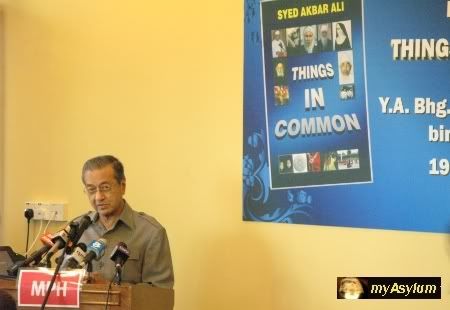
Tun began by quipping that he had felt apprehensive at first about accepting the invitation to launch the book, stating the current climate vis-à-vis Islam. He then made an observation that Muslims, particularly Malay/Muslims in Malaysia, were increasingly seeking exclusivity when it comes to their faith. That it is their faith, and their faith alone, that is the correct one, to the extent of ignoring and even rejecting any notion that there are similarities with other religions. In fact, many similarities existed between Islam and other religions.
And perhaps the evolution of this outlook has to do with the method of how we were learned about Islam. Tun recalled that when he was young, religion was taught on the basis that whatever was learned had to be accepted without question. The Quran was taught to be recited, but the emphasis was never on what information the book conveyed. Walski can attest to this fact – that we were expected to accept whatever we were taught without question.
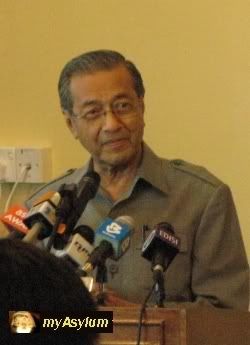 Today, there are many interpretations of, and what constitutes, “Islam”. Or, as Tun put it, “many religions of Islam”. While this in itself is natural, the problem comes in when each school of thought regards their interpretation as the one and only valid one, and start regarding others as deviant. Loyalty is to their own ulama (learned person) and to the interpretation that their ulama has. The many “religions of Islam” today are literally at loggerheads with each other. The most well-known and obvious one today being the schism between Sunni and Shiah Islam.
Today, there are many interpretations of, and what constitutes, “Islam”. Or, as Tun put it, “many religions of Islam”. While this in itself is natural, the problem comes in when each school of thought regards their interpretation as the one and only valid one, and start regarding others as deviant. Loyalty is to their own ulama (learned person) and to the interpretation that their ulama has. The many “religions of Islam” today are literally at loggerheads with each other. The most well-known and obvious one today being the schism between Sunni and Shiah Islam.
But more than just divided, Muslims today are a confused lot, and are not able to derive guidance from the Quran. One reason for this is that by and large, the “study” of the Quran is limited to being able to recite the book in perfect pronunciation. Tun said that it is important to be able to read the Quran in a language that one is comfortable with, in order that the wisdom contained in the book can be derived. Only then can understanding be derived from the Holy Book.
Instead, the general expectation is that one can only learn the Quran from a teacher, and not on our own. The question then arises: doesn’t that teacher, too, use his/her own interpretation? So, certain interpretations (which may or may not be right to begin with) get passed down from one generation to the next, without the benefit of referring to the original Quranic text.
When it comes to Syariah laws, to Tun, the underlying principle should be justice, for which, through his own study, there are 42 references in the Quran. Justice is an important theme in the book, and using a few examples, concluded that whatever laws are unjust cannot be from the Quran.
One example that Tun Dr. Mahathir quoted was when it came to rape. The generally accepted precept that 4 male witnesses are needed to “prove” that the rape occurred is unjust. And as it has happened (elsewhere in the “Islamic” world), if rape cannot be proven, the victim is liable to be prosecuted instead. That is certainly not justice.
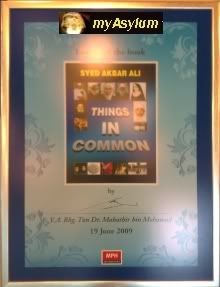 And when it comes to punishments, many that are generally accepted to be “Islamic” are actually do not originate from the Quran – stoning being one of them, which has been borrowed/adopted from the scriptures of other religions.
And when it comes to punishments, many that are generally accepted to be “Islamic” are actually do not originate from the Quran – stoning being one of them, which has been borrowed/adopted from the scriptures of other religions.
Being able to study the Quran in one’s own language, therefore, is important so that an individual is able to discern what is and is not from the Quran, and not have to rely on anecdotal information alone.
No book launch is complete without the guest of honor signing the plaque, and this occurred not long after Tun Dr. Mahathir concluded his keynote address.
And then, it was time for the press to have their time with both Tun and Syed Akbar Ali, which lasted for about 20 minutes or so.
Walski will attempt to do a review of the book in the not too distant future (hopefully later this coming week). He thanks Syed Akbar Ali for the invitation, and wishes him all the best for his upcoming book.
Yes, folks, you heard it – expect another book to come your way very soon. Walski’s not sure when, exactly, nor what the book will be about. Rest assured, however, that as soon as he knows, and gets clearance to announce something, you’ll be one of the first to know.
The following are more pictures from the event. If you get a chance, pick up a copy of Things In Common, available in major bookstores nationwide. Walski guarantees you an interesting read.
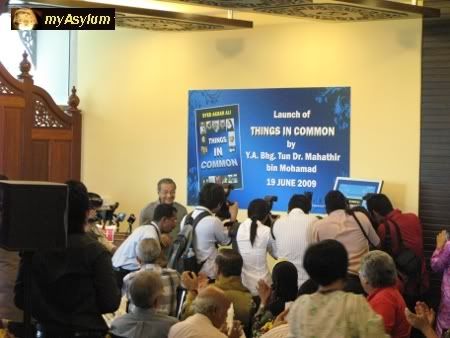
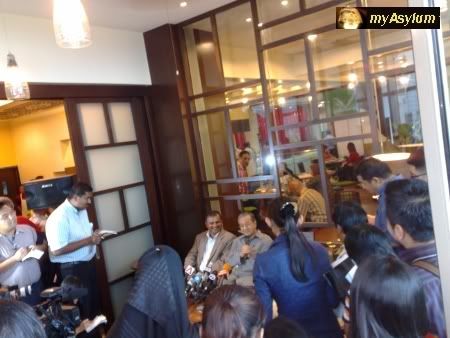

Read Syed Akbar Ali's own report of the book launch here. Blogger Big Dog, who was there, has his report on the book launch.
“Things In Common” has been reviewed by the following blogs (Long ago! Walski’s just late in doing this):
► Writing by Amir: In God we trust
► Rapera: BookIntro7: THINGS IN COMMON - SYED AKBAR ALI


![Reblog this post [with Zemanta]](http://img.zemanta.com/reblog_e.png?x-id=bdf53fd4-e642-4333-b73f-1d484663b67b)














